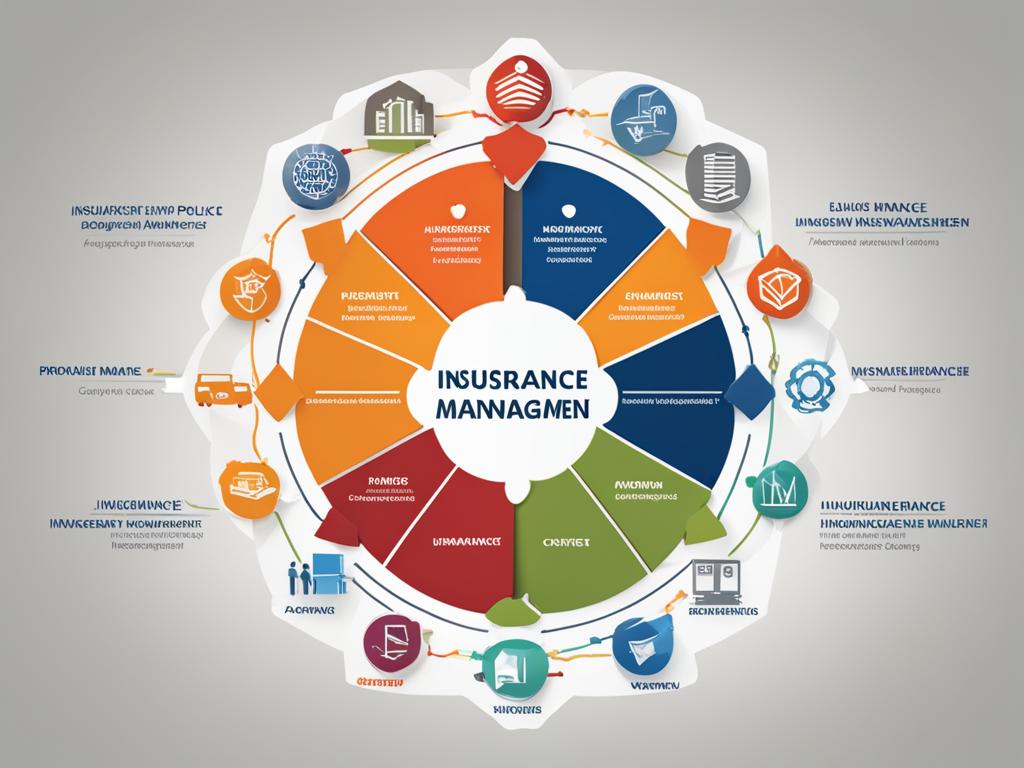Understanding Certificate Holder vs Additional Insured Explained
When it comes to insurance coverage, there are important distinctions between being a certificate holder and an additional insured. These roles have different responsibilities, coverage benefits, and rules that must be understood to ensure proper protection. In this article, we will delve into the differences between certificate holders and additional insureds, shedding light on their respective roles, coverage details, and the importance of understanding these concepts in insurance management.
As misunderstanding these differences can lead to costly litigation and failed loss transfer during insurance claim situations, it is crucial to have a clear understanding of certificate holder vs additional insured. By educating ourselves on these vital concepts, we pave the way for effective insurance management and risk mitigation.
Let’s dive deeper into the key differences between certificate holders and additional insureds, exploring their roles, coverage benefits, and rules.
Key Takeaways:
- Understanding the roles of certificate holders and additional insureds is crucial for proper insurance management.
- Certificate holders receive a Certificate of Insurance (COI) as proof of insurance, but do not have coverage themselves.
- Additional insureds are parties added to an insurance policy, extending coverage benefits to them.
- Policyholders are the named insureds on insurance policies and have coverage for various liabilities.
- Thorough insurance reviews and risk mitigation are essential for avoiding costly litigation and failed loss transfer.
The Certificate of Insurance and Its Scope
The certificate of insurance (COI) is a vital document that serves as proof of insurance and provides a summary of the key details of an insurance policy. It is often requested by third parties, such as clients or business partners, to verify that the policyholder has the necessary coverage. The COI contains important information, including coverage types, limits, the insurance provider, policy number, named insured(s), and effective periods.
Although the certificate of insurance provides a snapshot of the policy, it does not amend or alter the coverage details of the actual policy itself. It is crucial to understand that the COI is not a replacement for the insurance policy and should not be used to fully evaluate the extent of coverage. Instead, it serves as a concise summary of the policy’s key information and acts as proof that the policyholder has met the insurance requirements.
Here is an example of what a typical certificate of insurance (COI) may look like:
| Policy Information | Insured Information |
|---|---|
| Policy Type: Commercial General Liability | Named Insured: ABC Company |
| Policy Number: 123456789 | Policy Effective Date: January 1, 2022 – January 1, 2023 |
| Coverage Limit: $1,000,000 | Policy Expiration Date: January 1, 2023 |
| Insurance Provider: XYZ Insurance Company |
It’s important to review the COI carefully to ensure that the coverage aligns with the requirements and expectations of all parties involved. However, if there are any discrepancies or questions regarding the coverage, it’s best to consult the actual insurance policy and seek clarification from the insurance provider.
Policyholders: Roles and Coverage
| Policyholders | Named Insureds | Coverage |
|---|---|---|
| Policyholders are entities or individuals who have purchased an insurance policy. | Named insureds are usually policyholders who are specifically listed on the insurance policy. | Policyholders have coverage for bodily injury, property damage, advertising, and personal injury. |
| Subcontractors and vendors often provide a Certificate of Insurance (COI) to show they are policyholders and have coverage. | They may be individuals or businesses, such as contractors or property owners. | This coverage extends to incidents that occur within the scope of their business operations. |
| Policyholders should review the details of their coverage, including any exclusions or limitations, to ensure adequate protection. |
In the realm of insurance, policyholders play a vital role as they are the entities or individuals who have purchased an insurance policy. They are usually referred to as named insureds and are specifically listed on the insurance policy. Policyholders have coverage for bodily injury, property damage, advertising, and personal injury. This coverage extends to incidents that occur within the scope of their business operations.
Subcontractors or vendors often provide a Certificate of Insurance (COI) to demonstrate that they are policyholders and have the necessary coverage. This document serves as proof of insurance and is commonly required by clients or other entities for verification purposes. It is important for policyholders to review the details of their coverage, including any exclusions or limitations, to ensure they have adequate protection for their specific needs.
Policyholders are the backbone of the insurance industry, as they rely on coverage to safeguard their businesses and assets. Understanding the nuances of their roles and the extent of their coverage is crucial for effective risk management.
By being proactive in reviewing their policies and collaborating with trusted insurance management providers like bcs, policyholders can navigate the complexities of insurance and minimize potential risks. These comprehensive solutions not only ensure appropriate coverage but also provide peace of mind, knowing that their insurance needs are being handled by experienced professionals.

Certificate Holders: Verification Without Coverage
Certificate holders play a crucial role in insurance verification, but it’s important to understand that being a certificate holder does not grant any rights to coverage. Instead, certificate holders receive a Certificate of Insurance (COI) that serves as a snapshot of the policyholder’s insurance coverage. This document provides proof of insurance without actually extending coverage to the certificate holder.
When a business or individual requests a COI, they are seeking verification that the policyholder has valid insurance in place. The COI outlines important details such as the policy number, coverage types, limits, and effective periods. It is a valuable tool for confirming the existence and basic parameters of an insurance policy.
However, it’s crucial to note that the COI does not guarantee full coverage. It is always advisable for certificate holders to carefully review the insurance policy itself to understand the scope and limitations of the coverage provided. Relying solely on the COI without understanding the actual policy provisions can lead to misunderstandings and potential gaps in coverage.
Therefore, while certificate holders have the benefit of verifying insurance coverage, they should not assume they are automatically protected by that coverage. It is essential for all parties involved to thoroughly review the policy and consult with insurance professionals to ensure they have the appropriate coverage for their specific needs and circumstances.
Additional Insureds: Extended Coverage for Other Parties
Additional insureds play a crucial role in extending coverage to parties beyond the named insured. Through an endorsement added to the insurance policy, these parties are protected against liability claims arising from the actions of the policyholder or other insured entities. This extended coverage is particularly relevant in joint-venture partnerships, construction projects, and other collaborative ventures where multiple parties are involved.
By adding additional insureds to the policy, the policyholder ensures that these parties are covered under their insurance policy, minimizing potential disputes and legal complications. For example, in a construction project, if a subcontractor causes property damage, both the subcontractor and the general contractor may be held liable. However, with the additional insured endorsement, the general contractor can be assured that they are covered by the subcontractor’s insurance policy in the event of a claim.
The inclusion of additional insureds not only provides peace of mind to parties involved in joint ventures, but it also helps mitigate the potential financial risks associated with liability claims. By extending coverage to additional insureds, the policyholder ensures that all parties are protected and that the burden of liability is shared. This can help foster stronger relationships and encourage collaboration among different entities.
Benefits of Additional Insured Endorsement:
- Extended Coverage: Additional insureds are granted protection under the policyholder’s insurance policy, reducing the risk of uncovered claims.
- Liability Mitigation: By sharing the burden of liability, the financial risks associated with claims can be minimized.
- Enhanced Collaboration: Including additional insureds promotes trust and cooperation among joint-venture partners, subcontractors, and other parties.
- Streamlined Claims Process: With the additional insured endorsement, claims can be filed directly with the policyholder’s insurance provider, simplifying the process for all parties involved.

| Policyholder | Named Insured | Additional Insured |
|---|---|---|
| Entity or individual who purchases the insurance policy. | The primary insured party listed on the policy. | Parties added to the policy through an endorsement, extending coverage beyond the named insured. |
| Coverage | Bodily injury, property damage, advertising, and personal injury. | Protection against liability claims arising from the actions of the policyholder or other insured entities. |
| Proof of Coverage | Certificate of Insurance (COI) | Certificate of Insurance (COI) with additional insured endorsement. |
| Relationship | Policyholder is the named insured. | Additional insureds are parties affiliated with the policyholder, such as joint-venture partners or subcontractors. |
Specific vs Blanket Additional Insured
When it comes to additional insured endorsements, there are two main types – specific and blanket. Understanding the differences between these endorsements is crucial for businesses seeking extended coverage for additional parties.
A specific additional insured endorsement is designed to limit coverage to named entities. This means that only the parties specifically listed in the endorsement will have the benefit of coverage. In contrast, a blanket additional insured endorsement provides coverage to groups or classes of people without the need for specific names. This can be beneficial for situations where multiple parties may need coverage, such as subcontractors working on a project.
However, it’s important to note that while blanket endorsements offer broader coverage, they can also lead to potential gaps and uncertainties. Without specific names listed, it may be challenging to determine which parties are actually covered under the endorsement. This can lead to disputes and potential lapses in coverage if not managed properly.
Overall, understanding the differences between specific and blanket additional insured endorsements is essential for businesses to ensure adequate coverage and minimize potential risks. By carefully evaluating their needs and consulting with insurance professionals, businesses can make informed decisions regarding the type of endorsement that best suits their requirements.
Table: Comparison of Specific and Blanket Additional Insured Endorsements
| Aspect | Specific Additional Insured | Blanket Additional Insured |
|---|---|---|
| Coverage Limit | Limit is applicable only to named entities | Provides broader coverage to groups or classes of people |
| Additional Parties | Specific parties must be named in the endorsement | Applies to multiple parties without specific names |
| Clarity | Clear identification of covered parties | May lead to uncertainties and disputes |
| Management | Easier to manage and track coverage | Requires careful monitoring and documentation |
The Importance of Insurance Reviews
Thorough insurance reviews are essential for businesses to understand the nuances and complexities of coverage. It is crucial to evaluate insurance policies in detail to ensure that all parties involved, including policyholders, certificate holders, and additional insureds, have appropriate coverage. By conducting thorough evaluations, businesses can avoid potential gaps in coverage that could lead to costly litigation and failed loss transfer.
Insurance reviews involve carefully examining policy documents, endorsements, and coverage limits to identify any potential issues or areas of concern. This meticulous process helps uncover coverage nuances that may not be immediately apparent. It allows businesses to have a comprehensive understanding of their insurance coverage and make informed decisions.
Insurance policies can be complex, with various terms, conditions, and exclusions that can significantly impact coverage. Conducting thorough insurance reviews ensures that businesses are aware of the specific details of their policies and can navigate any potential challenges effectively. It also enables them to identify any gaps in coverage and take proactive measures to address them.

The Benefits of Insurance Reviews
- Identify potential gaps in coverage
- Ensure adequate protection for all parties involved
- Proactive risk management
- Minimize the risk of costly litigation
- Optimize loss transfer during insurance claims
By investing time and resources into insurance reviews, businesses can safeguard themselves against potential risks and liabilities. It provides them with the confidence that their insurance coverage aligns with their specific needs and protects all parties involved. Moreover, thorough insurance reviews contribute to effective risk mitigation strategies and ultimately reduce the potential financial impact of unexpected events.
Benefits of Using bcs for Insurance Management
Effective insurance management is crucial for businesses to navigate the complexities of coverage, mitigate risks, and ensure successful loss transfer. With bcs, you gain access to a comprehensive range of services that streamline the insurance process, providing you with peace of mind and reducing the likelihood of costly litigation.
One of the key benefits of utilizing bcs for insurance management is their expertise in coverage reviews. Their team of experienced professionals conducts thorough evaluations of your insurance policies, identifying any gaps or inconsistencies in coverage. This ensures that you have the appropriate protection for your business, minimizing the risk of unforeseen financial losses.
Additionally, bcs offers robust risk mitigation strategies that help you proactively manage potential threats. By analyzing your unique business risks and identifying areas of vulnerability, bcs can recommend tailored risk management solutions. This proactive approach empowers you to take necessary precautions, reducing the likelihood of incidents and potential insurance claims.
When it comes to loss transfer, bcs understands the intricacies involved. They have the knowledge and experience to navigate the complex process effectively, ensuring that you receive the maximum compensation for your losses. By leveraging their expertise, you can streamline the claims process and avoid any pitfalls that may arise.
| Benefits of Using bcs for Insurance Management |
|---|
| Expert coverage reviews |
| Robust risk mitigation strategies |
| Effective loss transfer management |
By leveraging the services of bcs for insurance management, you can ensure that your business is adequately protected and well-prepared for any potential risks or incidents. Their comprehensive approach, encompassing coverage reviews, risk mitigation, and loss transfer management, allows you to navigate the complex world of insurance with confidence.

Testimonial from a Satisfied Client
“Working with bcs for our insurance management has been a game-changer for our business. Their coverage reviews provided us with the peace of mind that we have adequate protection, and their risk mitigation strategies have helped us proactively manage potential risks. Additionally, their expertise in loss transfer has saved us time and ensured fair compensation for our losses. Highly recommended!”
Conclusion
Understanding the differences between certificate holders and additional insureds is crucial for proper insurance management. By clarifying roles, coverage, and rules, businesses can navigate insurance complexities and ensure adequate protection for all parties involved.
Being a certificate holder grants you proof of insurance but no actual coverage. It serves as a verification document, giving you peace of mind that the policyholder has insurance. On the other hand, additional insureds receive extended coverage through an endorsement. This endorsement ensures that liability coverage is extended from the policyholder to these additional parties.
To avoid costly litigation and failed loss transfer, thorough insurance reviews are essential. Evaluating coverage nuances and complexities can help identify any gaps or overlaps in insurance protection. Utilizing services like bcs for insurance management provides comprehensive solutions, including coverage reviews, risk mitigation, and loss transfer. With their expertise, businesses can streamline insurance processes and minimize risks, saving both time and money.
Understanding the differences between certificate holders and additional insureds and availing the benefits of insurance management services can provide businesses with the confidence and protection they need in an ever-changing insurance landscape.
FAQ
What is a certificate of insurance?
A certificate of insurance (COI) is a document that serves as proof of insurance and summarizes the key details of an insurance policy, such as coverage types, limits, provider, policy number, named insured(s), and effective periods.
What is the role of a certificate holder?
A certificate holder is an entity or individual who receives a certificate of insurance to verify the insurance coverage of the policyholder. However, being a certificate holder does not provide any rights to coverage. It is simply a document that shows proof of insurance without granting actual coverage.
What is an additional insured?
An additional insured is a party, such as a general contractor or lender, who has been added to the insurance policy through an endorsement. This endorsement extends coverage from the policyholder to these additional parties.
What is the difference between a specific additional insured and a blanket additional insured?
A specific additional insured endorsement limits coverage to named entities, while a blanket additional insured endorsement covers groups or classes of people without the requirement for specific names.
Why are thorough insurance reviews important?
Thorough insurance reviews are crucial to understand the nuances and complexities of coverage. They ensure that all parties involved, including policyholders, certificate holders, and additional insureds, have appropriate coverage to avoid costly litigation and failed loss transfer.
What services does bcs offer for insurance management?
bcs offers a full-service solution for insurance management, including coverage reviews, risk mitigation, and loss transfer. Their services help policyholders navigate the complex world of insurance, ensuring adequate coverage and reducing the risk of costly litigation.

